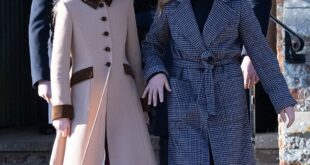The Ursid display, which produces around five meteors per hour at its peak, is expected to take place over the UK on Wednesday evening (December 22).
With the shower occurring around the time of the winter solstice, people will have maximum hours of darkness to try to spot the shooting stars.
Ursid meteors appear to radiate from near the Beta Ursae Minoris (Kochab) in the constellation Ursa Minor.
But the source of the shooting stars is a stream of debris left behind by comet 8P/Tuttle.
Dr Greg Brown, astronomer at the Royal Observatory Greenwich, said: “The Ursids meteor shower is a fairly minor display occurring in late December.
“With at best around 10 meteors per hour in ideal conditions, many observers won’t see more than a few meteors even around the peak.”
Read More
Read More
This is what the weather will be like in Lancashire on Christmas Day
The entire meteor shower occurs annually from 17 December to 26 December.
It will be visible with the naked eye, but skygazers will need to let their eyes adjust to the darkness.
“Try and find a place with a low horizon to grant yourself the best view of the sky, and wait for the early hours of the morning when the shower will be at its best,” Dr Greg Brown added.
“Fill your view with as much of the sky as possible (a deckchair can be a real help here) and wait.
“Eventually, you’ll see the bright streaks of light that are due to the Earth smashing into a trail of dust left behind the Comet 8P/Tuttle.”
Another meteor shower, the Quadrantids, will start soon after on Boxing Day for almost a month, but it is only expected to be fully viewable for six hours on January 2.
It is thanks to our loyal readers that we can continue to provide the trusted news, analysis and insight that matters to you.
For unlimited access to our unrivalled local reporting, you can take out a subscription HERE and help support the work of our dedicated team of reporters.
Source link



